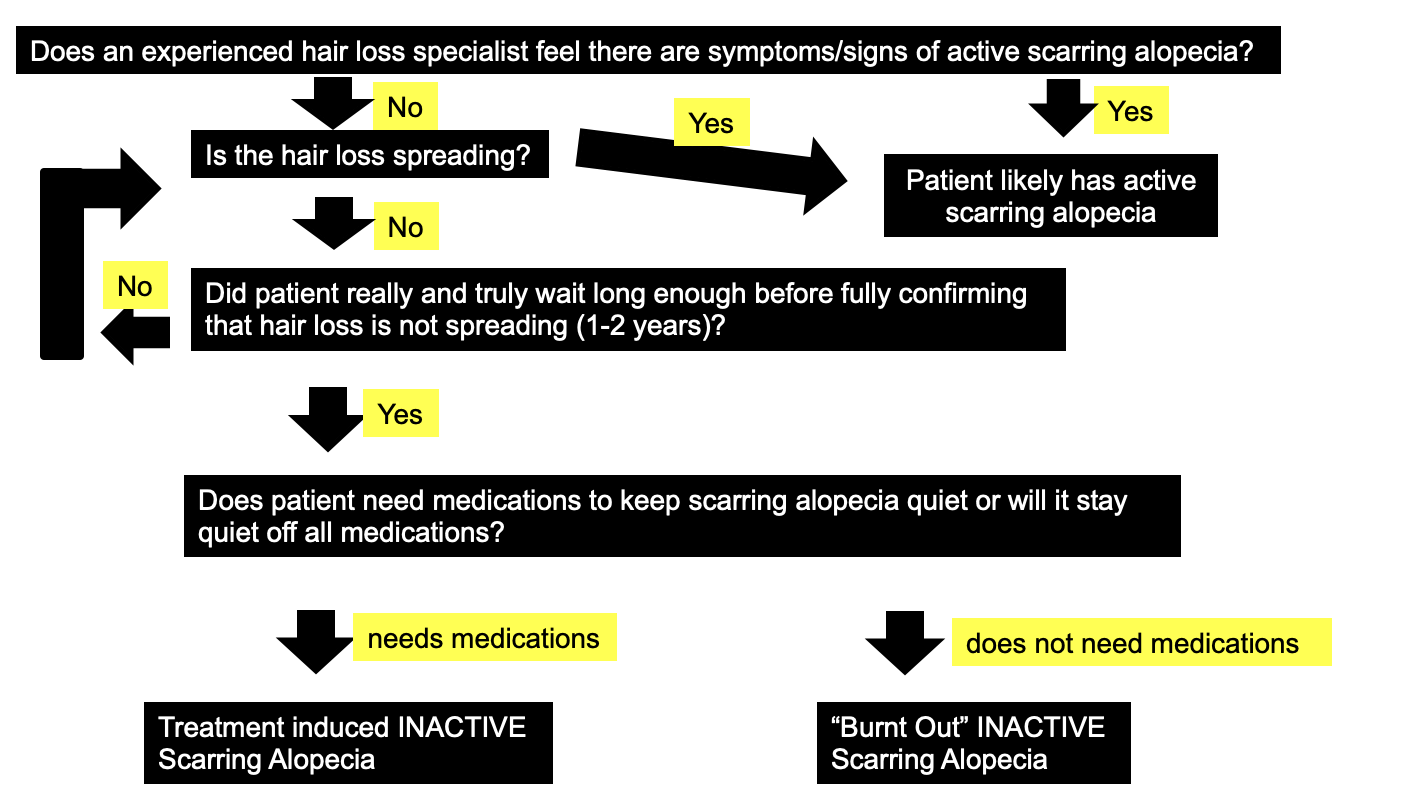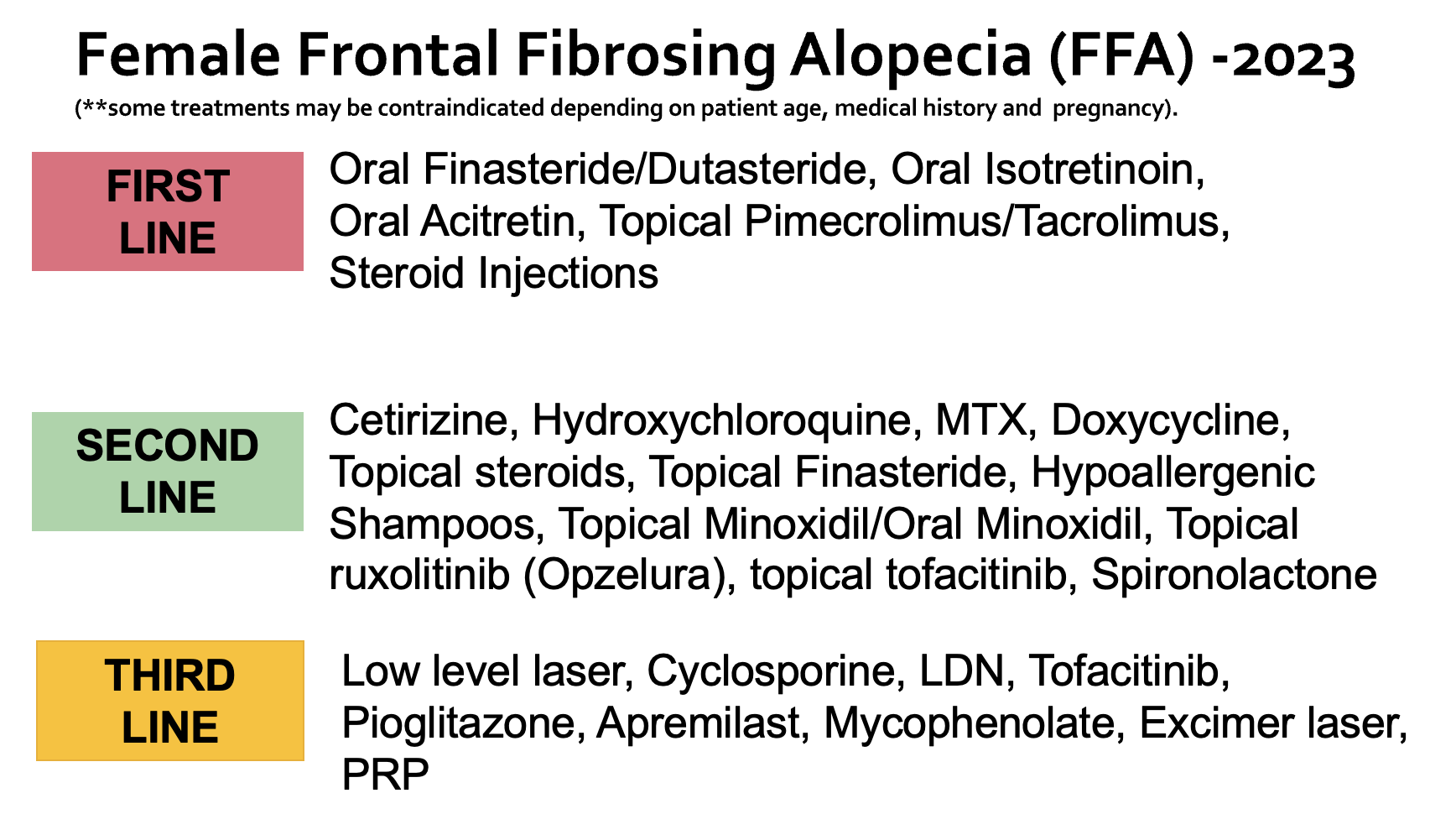Did my medication cause tinnitus?
I’ve selected this question below for this week’s question of the week. It allows us to review some concepts related to tinnitus.
Question
I am a 53 year old woman and have been prescribed dutasteride for my diagnosis of androgenetic alopecia. I have developed tinnitus recently and am wondering if it could be related to the dutasteride.
Answer
Thanks for the excellent question. The short answer is - it’s not impossible but more likely than not - it’s not related. But one needs to know all your life story from birth until now and review your medications and current health - and a whole lot more. Let’s dive in to the topic of tinnitus and then come back to this question.
Tinnitus, commonly called “ringing in the ears”, refers to sounds that patients hear despite the fact that those sounds are not present. Tinnitus is very common in the population. In fact 10-25% of the population will develop tinnitus. This means that many patients in the hair loss clinic will report tinnitus. So - from the very day you were born, there was a slight chance you were going to develop tinnitus.
What is meant by tinnitus?
Tinnitus refers to the perception of sound in one ear (or both ears) in the absence of an external source of sound that would be responsible for generating that sound. Although tinnitus is commonly called ‘ringing in the ears” the sound may be more than just ringing - buzzing, hissing, sizzling and whooshing are commonly described too. About 50 % of people experience this in both ears and 50 % have tinnitus in just one side (the left side is favoured for reasons that are unclear).
How common is tinnitus anyway?
As mentioned in my introductory words, tinnitus is common. About 15 % of the adult population has experienced tinnitus. Studies across various countries including Japan, Nigeria, Egypt and the US suggest rates are similar. One study estimated that about 50 million people in the US have experienced tinnitus and about 16 million experience it frequently.
What are the common causes?
There are many causes of tinnitus. When the precise cause can not be found, a person’s tinnitus may be referred to as ‘primary’ or ‘idiopathic’ tinnitus. When an underlying cause for the tinnitus is found, the tinnitus is referred to as ‘secondary’ tinnitus.
Tinnitus can be associated with the following conditions and risk factors:
1. Hearing loss. The main risk factor for tinnitus is hearing loss. A large proportion of patients with tinnitus have some degree of hearing loss. For this reason, it is essential that everyone with tinnitus have a hearing test.
2. Noise exposure. Many people develop tinnitus after exposure to loud noises - and this can either be short term or long term noise exposure. For example, some patients may develop tinnitus after attending a rock concert. Others may develop after years of working in a loud working environment.
3. Acoustic neuromas (schwannomas).
4. Ear diseases. Various inner ear, middle ear and outer ear diseases can cause tinnitus.
5. Depression and Anxiety. A link between these conditions and tinnitus has been demonstrated in several studies.
6. Drugs. The most common drugs causing tinnitus are aspirin and NSAIDs, benzodiazepines, tricyclic antidepressants, antibiotics (gentamicin) and isotretinoin. Blood pressure pills including loop diuretics, ACE inhibitors, angiotensin receptor blockers, thiazide diuretics, potassium-sparing diuretics, and calcium channels blockers are rare causes. The antimalarial drugs chloroquine and hydroxychloroquine can also give tinnitus. anti-cancer drugs can also cause tinnitus.
7. Vascular issues. Disease of the blood vessels are sometimes associated with a ‘pulsatile’ tinnitus
8. Hypertension
9. Immune diseases - rheumatoid arthritis, lupus, multiple sclerosis
10. Endocrine issues- hypothyroidism
12 TMJ disease - diseases of the temporomandibular joint
13. Caffeine intake.
Now back to Tinnitus and Dutasteride
Tinnitus is not something that is typically reported with dutasteride. In the 2011 review by Dr Cianfrone and colleagues called “Pharmacological drugs inducing ototoxicity, vestibular symptoms and tinnitus: a reasoned and updated” dutasteride is not even listed. That does not mean it’s not a potential cause - it just means it’s pretty uncommon if there is any link.
There are of course people who develop tinnitus with dutasteride. In fact, 10-25 % of people using dutasteride are statistically expected to get tinnitus. Not because tinnitus was caused by the dutasteride but rather because 10-25 % of human beings get tinnitus. 10-25 % of adults over 50 who eat popcorn are expected to develop tinnitus. 10-25 % of adults over 50 who wear brown shoesare expected to develop tinnitus. 10-25 % of adults over 50 who own dogs are expected to develop tinnitus. 10-25% of adults over 50 who use dutasteride are expected to get tinnitus.
Good studies are really needed to know if the rates are truly increased in dutasteride users or not. We just don’t have that data.
How does a patient know if it’s related to the drug?
As reviewed above, dutasteride is not likely the culprit of tinnitus for most people. It’s not impossible - just not common.
However, one needs to know your whole story from birth until the present day and examine your ears, eyes, neck and blood pressure and heart rate and joints and TMJ and possibly more. One needs to know all the medications you take, including the key culprits listed above
Tinnitus from drugs usually happens fairly quickly after starting the drug. The drug with the most rapid onset of tinnitus are the salicylates (ie aspirin). Following oral consumption or systemic injection of the drug, tinnitus presents within minutes and subsides within 72 h of the final dose. Blood pressure medications like furosemide also cause a fairly rapid onset of tinnitus. Tinnitus occurring months after starting is not likely to be related to the drug.
Suggestions for Patients on Dutasteride with tinnitus
For patients who develop tinnitus, I recommend seeing their primary care physician for a full examination from head to toe. This should include examination of the ears (wax), basic neurological testing (cranial nerves) TMJ evaluation, lymph node evaluation, blood pressure evaluation, heart rate evaluation, thyroid examination. Your primary care doctor may send you for some blood tests (thyroid), measure your blood pressure, possibly perform and EKG and possible send you for hearing tetss. We’ll get more into this in a moment.
In many cases (for my own patients), I will recommend stopping the drug for 1 -3 weeks and seeing if the symptoms disappear and then restarting it again and seeing if the symptoms appear. A diary should be kept each day of the number of times the tinnitus occurred (or whether it was constant), the ear it was heard in and the type of tinnitus (pulsatile, etc). Whether this is an appropriate thing for you to do, I can’t say as I don’t have all your information.
What investigations could a patient considering having if they have tinnitus?
1. Patients with tinnitus should first seek the attention of their primary care physician as this physician is best positioned to assess, investigate and provide appropriate counselling. The doctor will ask whether the tinnitus affects one ear or both, when it started and how it’s changing over time. The presence of tinnitus in one ear may raise concern to the doctor that a focal lesion could be present. The evaluating doctor will ask about other symptoms like dizziness, and hearing loss. Sudden onset of tinnitus associated with hearing loss requires prompt evaluation. It may require the patient to have an MRI imaging test and may require the patient to start a course of oral steroids,.
A full history will be taken by the primary care doctor during the evaluation of tinnitus. Blood pressure will be measured by the doctor. Ears will be examined. Bedside hearing and vibration tests (with a tuning fork) will be done. Basic neurological testing will be done. Blood tests may be ordered if deemed appropriate (ie thyroid studies, etc)
2. A formal audiology assessment (hearing test) is recommended for all patients who have tinnitus. Many patients with tinnitus have hearing loss so all patients with tinnitus should be evaluated with a hearing test.
3. Referral to an ENT (ear nose and throat) surgeon may be recommended if the cause of tinnitus is not clear or if further evaluation is needed.
4. Patients with tinnitus only on one ear (one side) or who have pulsatile tinnitus or who have asymmetric hearing loss or who have a focal neurological problem will likely be given a recommendation by their primary care physician to have further imaging tests done. This may include CT or MRI depending on the specific situation.
How is tinnitus treated?
Sometimes tinnitus just goes away on its own and therefore treatment is not needed. If tinnitus lasts more than 3 months, we call it chronic tinnitus.
If there is an underlying cause of the tinnitus (as there is in cases of ‘secondary tinnitus'‘), the goal of treatment is to address the cause. If a drug is thought to be causing the tinnitus, it is stopped. If a tumor is causing the tinnitus, it is treated. If depression and anxiety are contributing to the tinnitus, these are addressed.
There are no drug treatments for tinnitus that have proven effective.
In cases of primary tinnitus, hearing aids may be ordered for the patient if there is evidence of hearing loss. Sound therapy (provided by an audiologist) or cognitive behavioural therapies (provided by the primary care physician or a psychologist) are helpful therapies. Other treatments include tinnitus retraining.
Thanks again for the great question.











